
A Githyanki in beautiful full color, it’s “silver sword” obviously not silver.
Back in the late 70s, D&D was still in its first edition (depending on if you consider Advanced the edition same as Original I guess), and it was still establishing many core features we take for granted today. The original Monster Manual had established the standard orcs, goblins, and dragons, as well as many of D&D’s more original classics like beholders, mimics, and owlbears, but the players, people after my own heart, wanted more. This led to the creation of the Fiend Folio, the greatest work to come out of D&D’s early days. Where the Monster Manual was almost entirely written by Gary Gygax, the Fiend Folio had monsters created by a wide variety of writers, leading to a strange and eclectic collection of creatures.
Many hate the Fiend Folio for this, seeing it as something very silly but for a few “cool” things like Drow and the Gith, because apparently monsters are only any good when they’re traditionally “badass” or whatever. However, I love the Fiend Folio’s weirder monsters, some of them even more than their modern recreations in 5th edition, which has thankfully embraced many of the franchise’s goofier elements. However, there will be creatures here that are potentially interesting that I won’t be covering because the art and writing doesn’t catch their full potential yet, so don’t expect Kuo-Toa, Adherers, or Hook Horrors in this article.
Githyanki
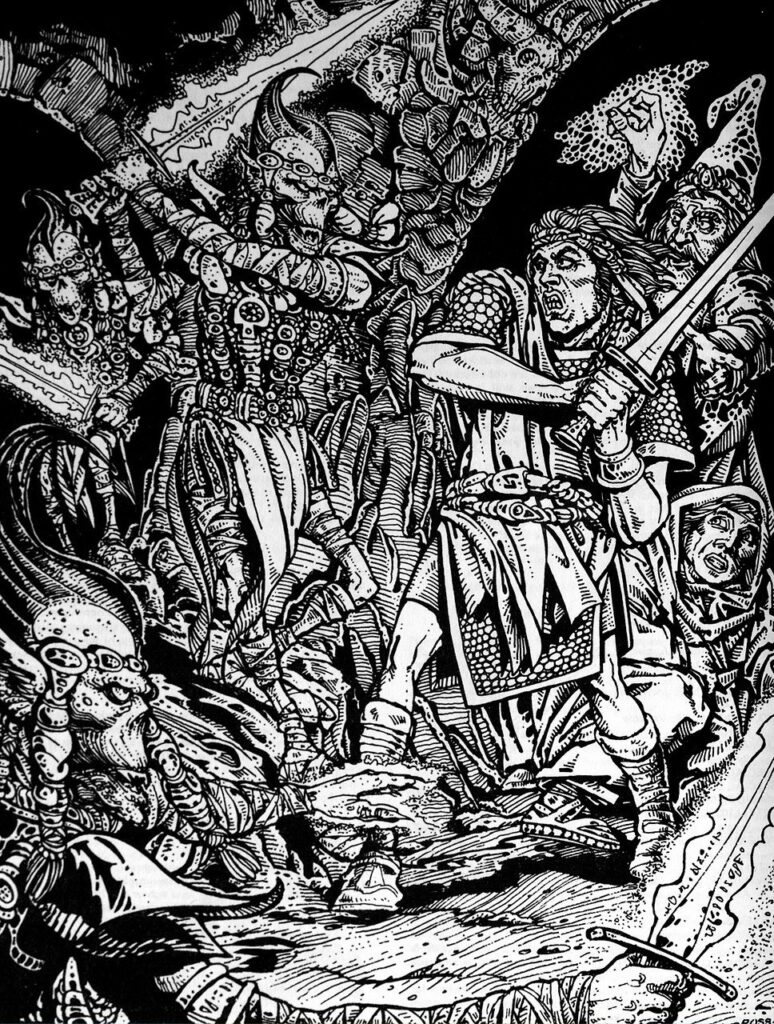
Let’s start with something that people generally agree is pretty cool, but is still weird enough to appeal to me. The Gith are very much the breakout stars of the Fiend Folio, beloved for being cool and just a little edgy. They have a more detailed entry than pretty much any other in the book, talking about how they are the descendants of humans enslaved by mind flayers and changed over time. After escaping the chains of their masters, they split into two factions, who for some reason look like 100% different species. It’s the evil ones, the Githyanki, who ended up cooler, big surprise. Both their origin and their look remind us that first edition D&D was influence by science fiction as well as fantasy, because the creators were massive nerds.
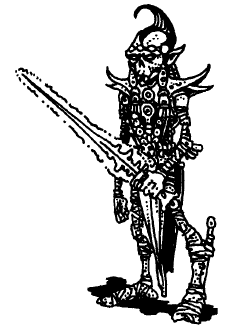
First edition actually has my favorite art of the Githyanki. They look almost undead with their lack of nose and skin that clings close to their skulls, and they have a bit of a sci-fi vibe with their cool glowing sword, swooshed-out pauldrons, and radical haircuts. They would totally be decked out in chrome if these images were in color. Ignore that the one on the cover isn’t, it didn’t even get the Silver Sword right. Speaking of that, that’s their special weapon, and it can instantly kill anybody who’s astral projecting by severing their soul from their body. Given the Githyanki live in the astral realm, you can see how this ability is nice to have for them. At a glance, they also seem to have bird-like legs with the heel raised off the ground, but looking at the right leg I think that’s just wonky perspective. Shame though, it would be cool.
Grell
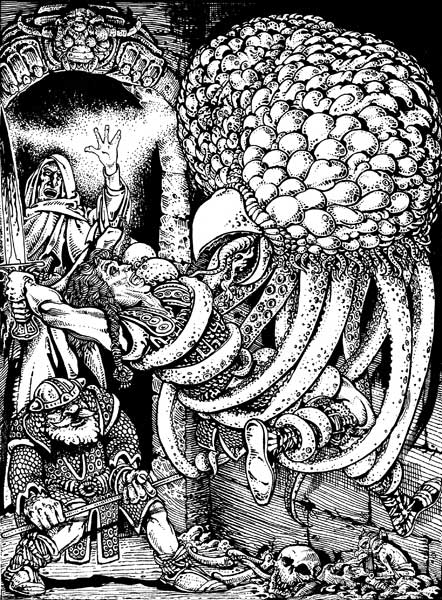
Another one that generally seems well-regarded and has appeared consistently through the editions, the grell is straightforward but just plain cool. Its body is little more than a massive brain, fronted with an eagle’s beak and dangling tentacles from its base. It almost looks like a sea creature (and honestly sounds like a distorted description of an octopus, come to think of it) but it of course actually floats around on land and eats people. There isn’t much information about them in the Folio, but they have a striking appearance and apparently paralyzing tentacles, and sometimes that’s enough!
Achaierai
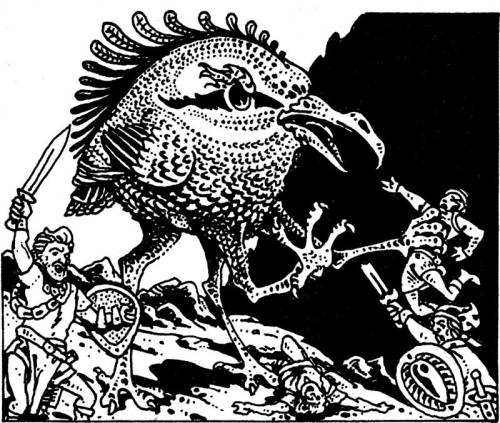
Another monster that I think is conventionally cool but a lot of people thought was ridiculous is this fearsome bird creature. I guess the original art is a little ridiculous, with its charming round bird body glaring hilariously out at us, but there’s nothing really silly about the concept, and there have been some really cool achaierai drawn through the years. Still, the original is charming, an avian based not around flight but equipped with four long, slender legs equipped with talons, apparently dedicated to running its prey down. It has a bit of a spidery look to me, with its body segments so closely associated, definitely more arthropod than avian in body plan, which is really cool.
Slaad Lords
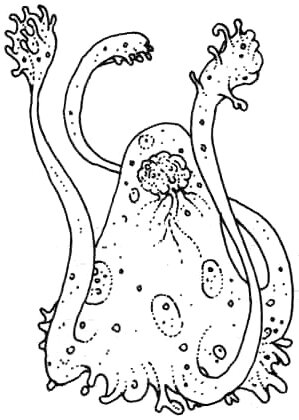
I’ve covered the froggy slaadi, the embodiments of chaos in its purest form, in another article. However, because that article was about frogs, we didn’t cover their gods, the Slaad Lords. They don’t at all resemble their regular counterparts, which later editions explained as just being an inherent part of their chaotic nature; slaadi themselves are only all frogs because the lords have restricted their forms to prevent the race from becoming more powerful than themselves and would otherwise be much more diverse. Ssendam is still more fitting to the overall formless chaos the Slaadi represent, with its standard form being a giant golden amoeba with a brain floating inside. Extremely simple, without much to elaborate on, but a perfect design for a creature called “Lord of the Insane”! I believe that the jelly brain is a little loony!
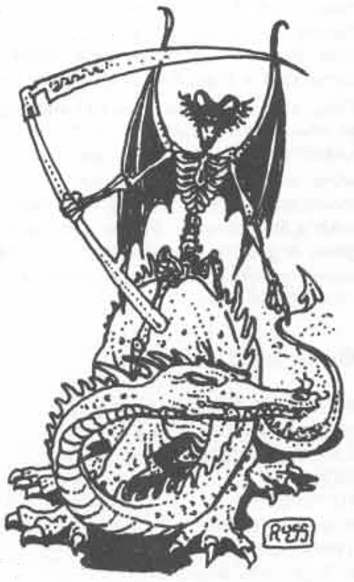
Ygorl is on some level pretty generically “cool”, what with being a radical black skeleton with devil wings and a scythe. He’s even riding a dragon, it doesn’t get more “album cover cool” than this. However, he does stand out for that adorable head. It’s somewhat heart-shaped with big, diagonal eyes (an excellent orientation for eyes!) and a funny little mouth. The most interesting feature is the set of rubbery-looking “wings” on the sides of his face. I kinda want to read them as gills to keep up the amphibian theme. It really feels right that primordial chaos is represented by amphibians, right? The way they bridge land and water, changing drastically through their lives? Is that just me?
Meenlock

The Fiend Folio is generally lacking as arthropod monsters go. They’re mostly awkward humanoids or just larger versions of existing bugs. However, this is all made up for with the Meenlock. Meenlocks are clearly not actual insects, but they capture the feel of a humanoid louse, with their pincer claws, fuzzy exoskeleton, and sucking mouthparts. The whole face sells what a strange, nasty creature this is, with huge eyes, a wrinkled surface, and stabbing mandibles and feeling tendrils all around the hole that is its mouth. Apparently their face is pure white, while their bodies are dark with black hair, emphasizing it more.
The visuals match the lore. Meenlocks linger in damp shafts coated in moss, likely often abandoned wells. Anybody who disturbs the entrance to these shafts will be marked, the Meenlocks within picking a target that they will torment telepathically, taunting that they are coming to get them. After following at a distance for the rest of the day, the Meenlocks will attack at night, trying to drag their chosen target away to be turned into a new Meenlock in their lair. It fits perfectly with that design!
Mezzodaemon

Mezzodaemons are another of those nice science-fiction looking critters. In future editions, they take more of a straightforward insectoid appearance (they are also renamed mezoloths, as part of the yugoloth species of fiend), which is fine, but I prefer this bug-eyed space monster! There’s something owl-like to the creature’s head, with that small beak and oversized eyes, which meshes well with the armored body. There isn’t much else to say about them, just that I like little snake tongue too.
Berbalang
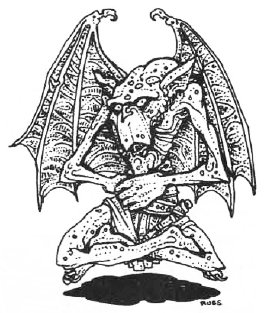
The berbalang may be somewhat the opposite of the Mezzodaemon, with a design that’s just okay but lots of cool lore. Not that the design is bad. The humanoid shape with bat wings has been done many times in D&D, but I like the details. The elongated skull is really nice, and I like how emaciated and filthy it looks. The winning factor really is the lore though. A berbalang spends most of its time astral projecting, its soul in the same plane where the Githyanki live. There they both eat astral prey (I have no idea what lives there that they would eat) and meet up with other berbalang for weird mating rituals. Their body remains comatose in a hidden-away cave, a really cool image to think of. This ancient, wrinkled being sleeping forever as it explores another realm in its mind.

It also gets the most gruesome image in the book, depicting what happens when they send out a copy of themselves to feed on the material plane. Nice.
Steam Mephit
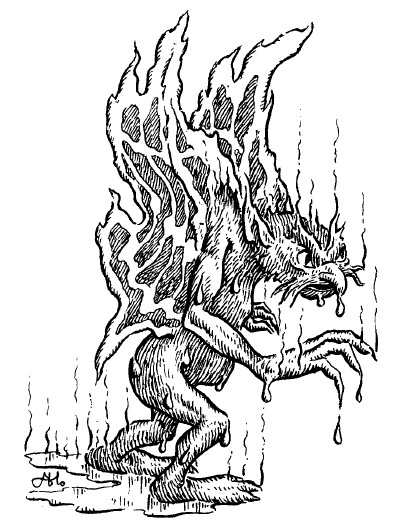
There are four types of Mephit in the Fiend Folio, basically a collection of weak elemental imps. They all have their charms, but my favorite is the steam mephit. The grouchy muppet-man is completely soaked all the time, covered in waterlogged fur. The wings are a bit more like a butterfly’s, which I don’t see much. I like to imagine that the body is drab and grey but the wings are colorful.
Khargra
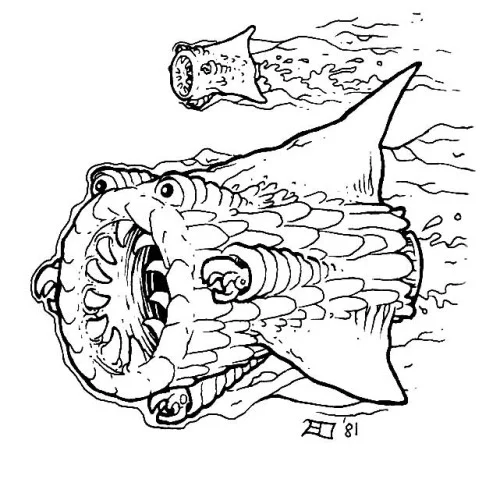
Another elemental that catches my attention is the khargra. Instead of a basic humanoid, this earth elemental takes a shape like an alien shark, a cylindrical critter with three fins set around it and two adorable little froggy eyes over the circular mouth. The little pincer claws you can see around the mouth can extend on arms. As you might guess from the look of the creature, they “swim” through the earth, although they are not carnivores. Like the more familiar rust monster and xorn, they are dangerous not cause they want to eat you but beacause they want to eat your gear, in this case the metal that their own fins and claws are made of.
Garbug
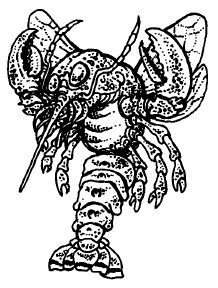
While the Meenlock captures the idea of a scuzzy bug, garbugs are an actual arthropod. They’re pretty simple, but a lobster with wings is just utterly charming on its own, especially with that needle-nose proboscis. Mostly I shared them for that amazing name, sadly not indicative of any actual association with garbage. I would love the idea that horrible flying lobsters instead of regular little flies come crawling out of dumpsters in some D&D worlds.
Tabaxi

Cats 2019 is the greatest bad movie ever made. I approve of this Tabaxi and they should have stayed like this.
Flumph
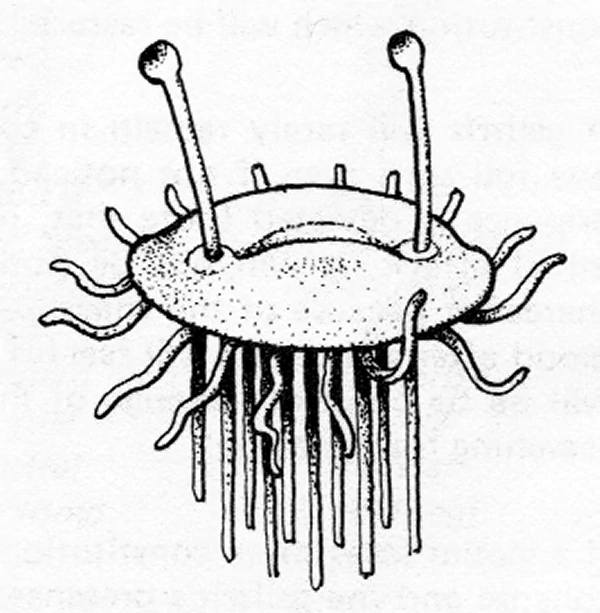
We have reached the final three, three creatures I love but have been widely derided ever since their introductions. First up is quite possibly the most ridiculed monster ever made for D&D, the flumph. Apparently, they are too absurd for very serious nerds pretending to be elves and dwarves.
These exceptionally adorable creatures are basically hovering jellyfish, sucking in air through the mouth on top of their body and puttering around by pumping their body. They are friendly, good-aligned monsters, but the best kind; weird ones, that defend themselves with acidic tentacles and a spray of liquid so foul-smelling that your friends will refuse to be within 100 feet of you for a week if it hits you. That’s in the rules! I love that such a weird creature is allowed to be designated good. I love that this flying jellyfish is absolutely adorable. They clearly wanted us to love this thing, and they have succeeded.
Flail Snail
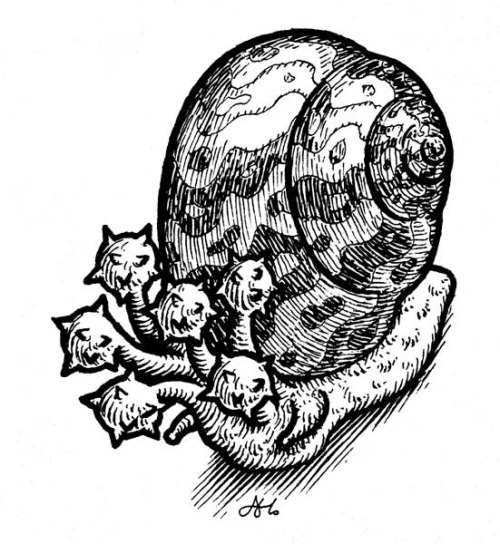
Never underestimate the power of a good name to build a monster around! The flail snail, in addition to its regular eye stalks, has several stalks dedicated to bearing massive spherical clubs covered in spikes. While we don’t know much about its behavior, we do know that it just smashes everything it comes across with those flails for seemingly no reason. Hilarious! They are also apparently extremely vibrantly colored, and their shell has the delightful property that sometimes it straight up reflects magic back at the party who casts it. Imagine throwing a fireball at a giant snail and it just bounces off and torches your druid. Beautiful.
Also if you kill it, it will make you feel like the bastard you are. When mortally wounded, the flail snail will withdraw into its shell and scream, potentially luring in more monsters. We don’t get little details like this often in the Fiend Folio, and I wish there were more.
Lava Children
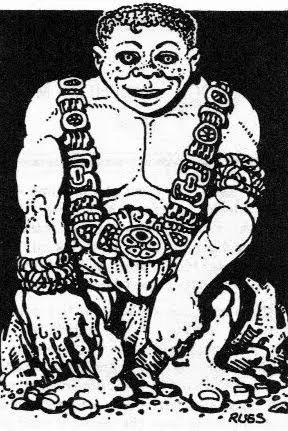
While the flumph is the most ridiculed monster of the manual, that’s probably more through cultural osmosis than anything else. People who haven’t read the Monster Manual mock the flumph. Those who have are more likely to call out the absurdity of the lava children. Who, yes, are absurd. But while most only see humor in their Alfred E. Neuman grins, I see it differently. These things are straight up unsettling in much the same way as a Cabbage Patch Kid. They become significantly worse when you learn that they’re as tall as an adult, despite their childish faces, and are always, permanently, grinning.
Their lore and powers are also pretty neat, more detailed than most entries in the book. They are the descendants of fire and earth elementals mingling and have somehow continued to reproduce on their own, forming actual societies. While their native sorcerers have magic with power over fire, their main ability is that they treat metal as air. Metal weapons simply go through them harmlessly, and they can reach their claws right through your breastplate and stab you. That’s just stupendously horrible. Look at them throwing down with this demonic lizard king. Tell me which you’d rather face off with.
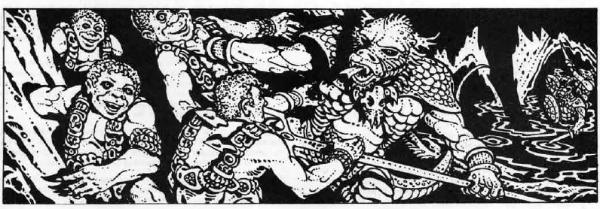
Oh look
They agree with me
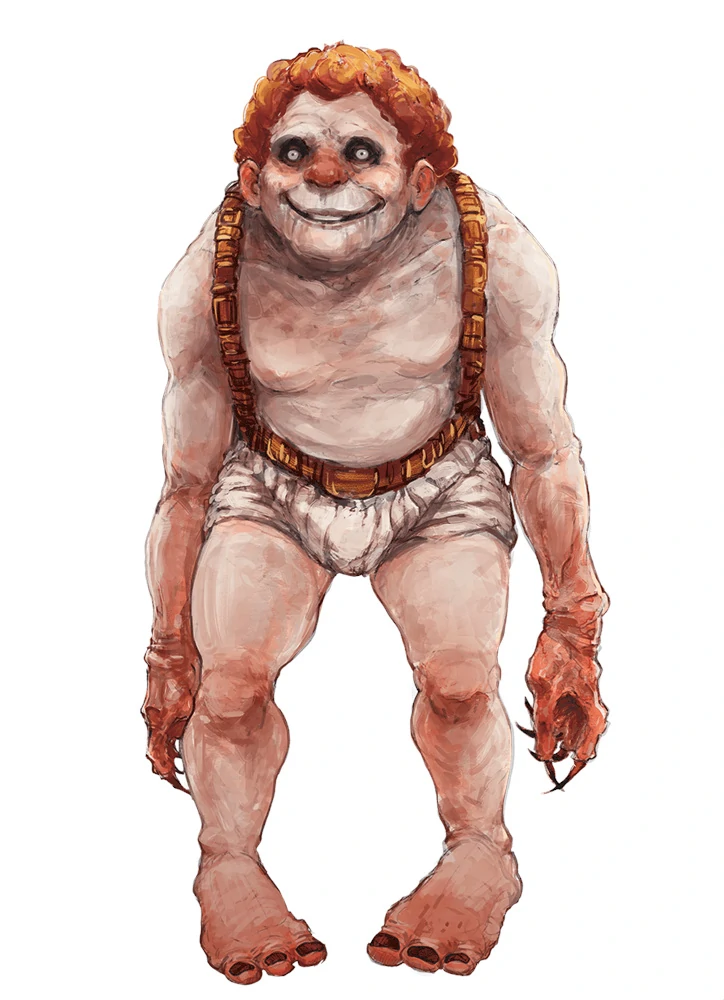
Want more tabletop terrors? Click below:
